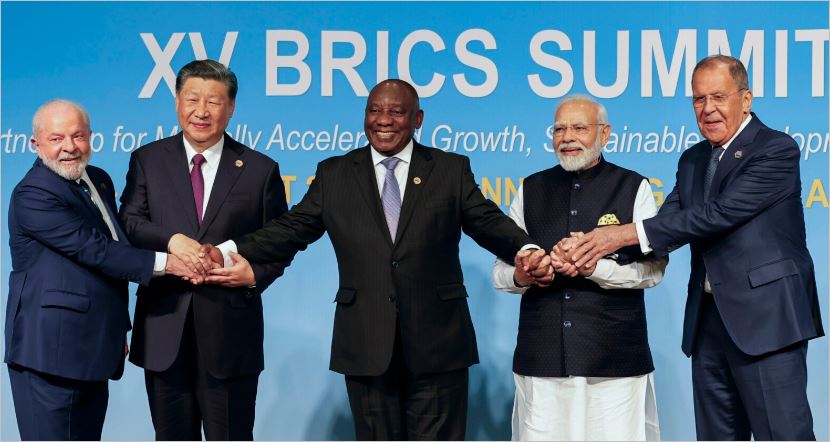new BRICS members _ In a historic move, six new countries are set to join the emerging powerhouse bloc of BRICS (Brazil, Russia, India, China, and South Africa) starting in 2024.
This announcement was made by South African President Cyril Ramaphosa during the BRICS summit held in Johannesburg on August 24th.
Among the newcomers are Iran and Saudi Arabia, alongside the United Arab Emirates, Argentina, Egypt, and Ethiopia.
This expansion comes as BRICS seeks to further enhance its global influence and economic impact.
BRICS Expansion A Landmark Decision
BRICS, initially formed in 2009 by Brazil, Russia, India, and China, with South Africa joining in 2010, has become a formidable force on the world stage.
Currently representing approximately 40% of the world’s population and contributing over a quarter of the global GDP, BRICS has established itself as a significant player in international affairs.
President Ramaphosa’s announcement marked the second expansion of BRICS since its inception. The decision to include the six new members was reached after two days of intensive discussions during this week’s summit.
Notably, this expansion plan had been under consideration for over a year, demonstrating the careful and deliberate approach taken by the existing BRICS members.
The New BRICS members

Iran: Known for its rich history and abundant natural resources, Iran’s inclusion in BRICS is expected to bring geopolitical and economic strength to the bloc.
Its participation is seen as an opportunity to enhance cooperation in various sectors, including energy and trade.
Saudi Arabia: As a major player in the Middle East, Saudi Arabia’s membership in BRICS will likely have significant implications for the bloc’s engagement in the region.
The kingdom’s vast oil reserves and strategic location make it a valuable addition to the group.
United Arab Emirates: The UAE’s rapid economic development and global investments make it a noteworthy inclusion.
Its role in the bloc is expected to focus on economic diversification and technology exchange.
Argentina: With a strong agricultural sector and a growing economy, Argentina’s participation is anticipated to bolster BRICS’ agricultural and trade capabilities.
This South American nation brings a unique perspective to the bloc.
Egypt: Egypt’s rich cultural heritage and strategic location in North Africa can further enhance BRICS’ presence in the African continent.
Collaboration with Egypt may extend to areas such as infrastructure development and regional stability.
Ethiopia: As one of the fastest-growing economies in Africa, Ethiopia’s entry into BRICS can open up opportunities for trade, investment, and development in the East African region.
Its youthful population and untapped resources make it a promising partner.
Conclusion
The decision to include Iran, Saudi Arabia, the United Arab Emirates, Argentina, Egypt, and Ethiopia into BRICS represents a significant milestone in the evolution of this influential bloc.
With a shared commitment to fostering economic growth, political stability, and global cooperation, BRICS is poised to expand its impact on the world stage.
As these six new members join forces with the existing BRICS nations, the possibilities for collaboration and development are boundless, promising a brighter future for all involved.
For More Information visit Google News